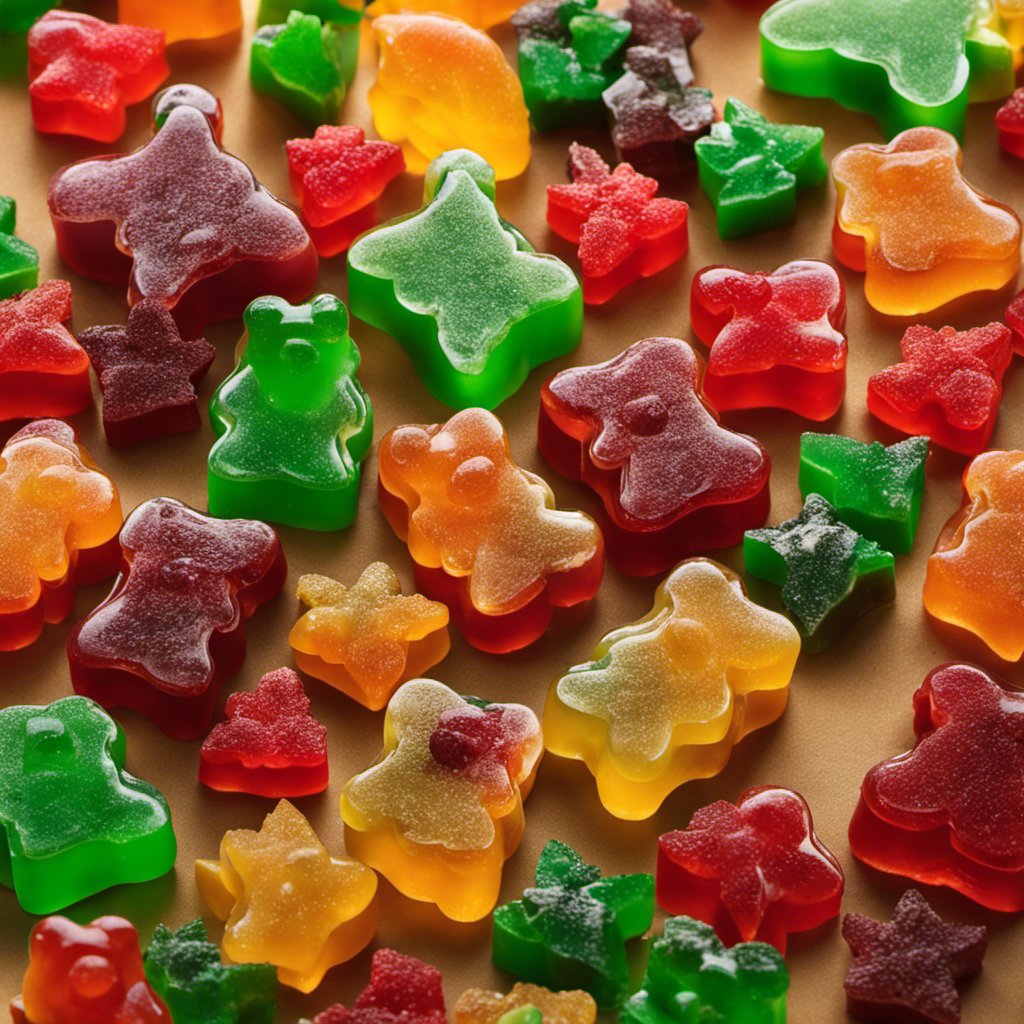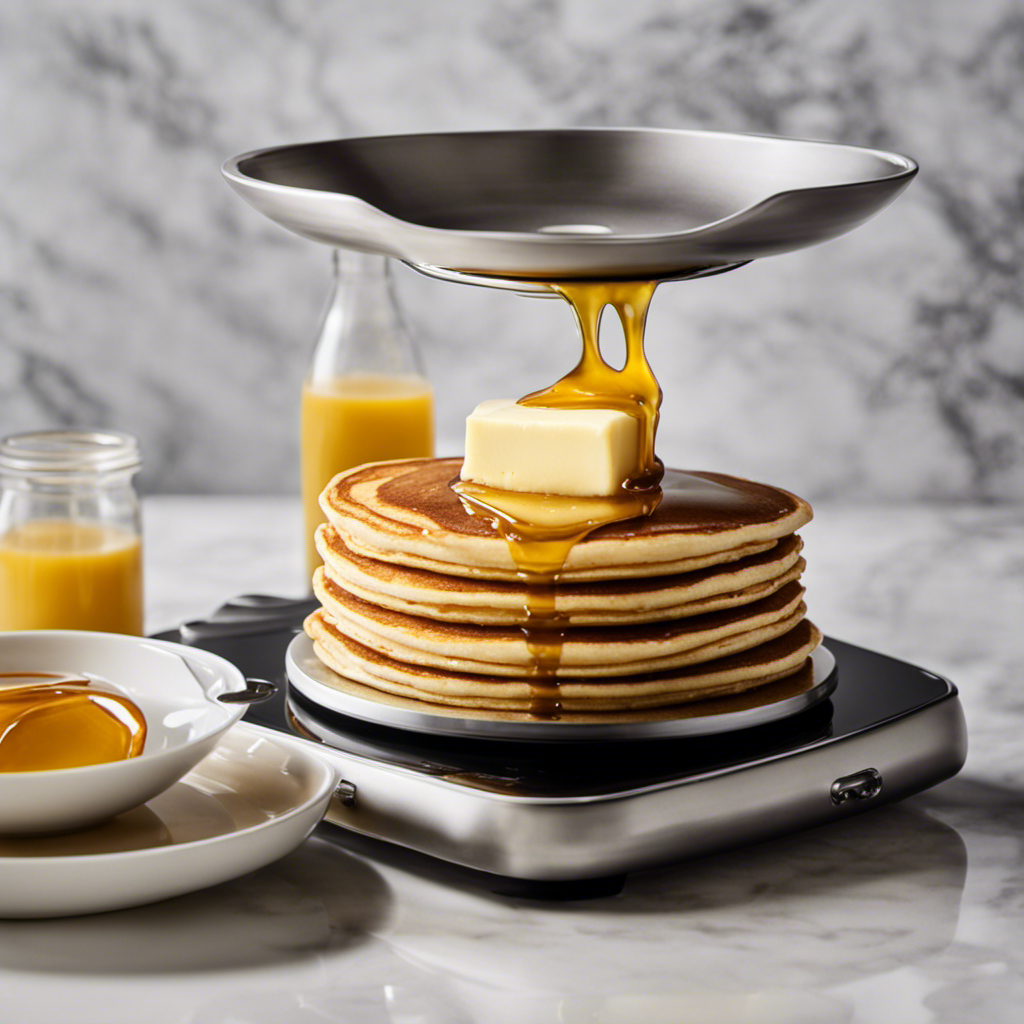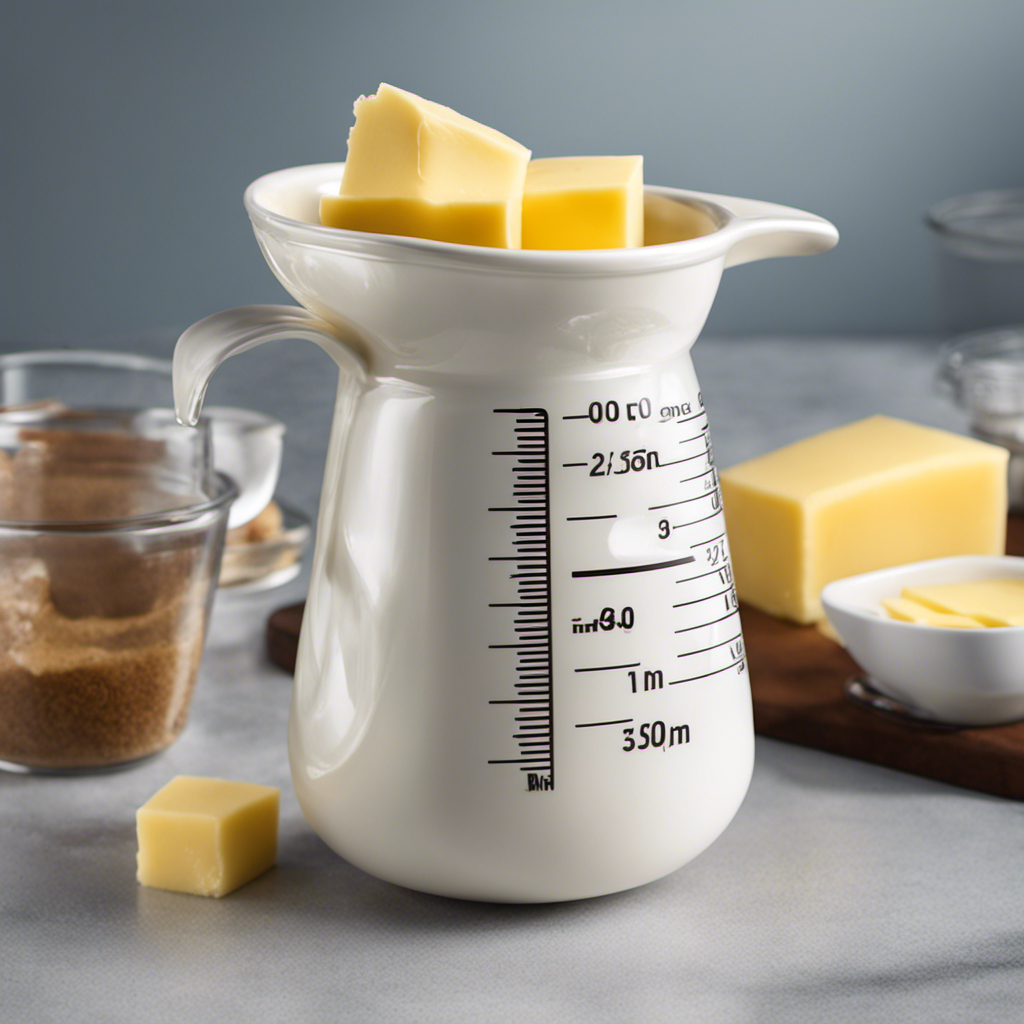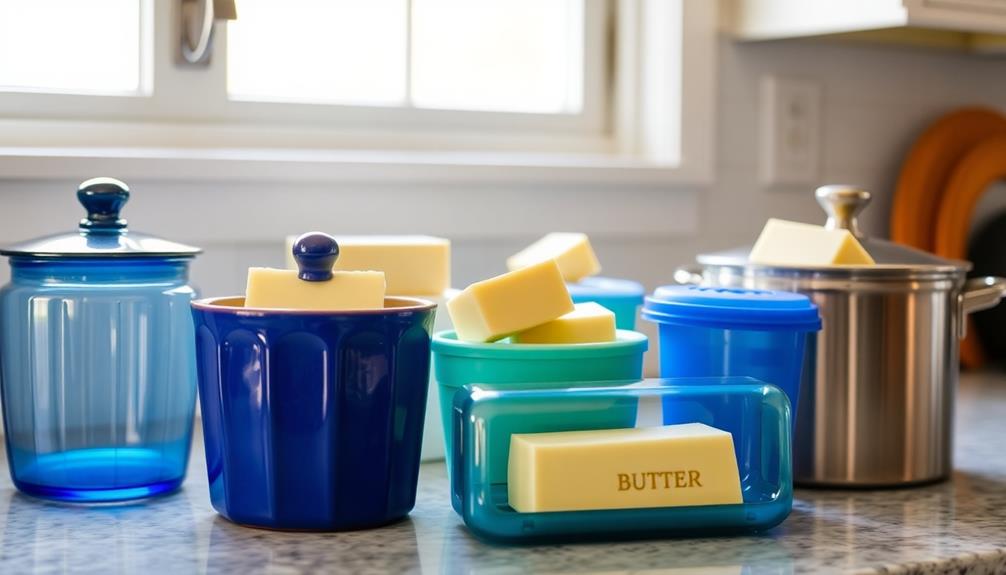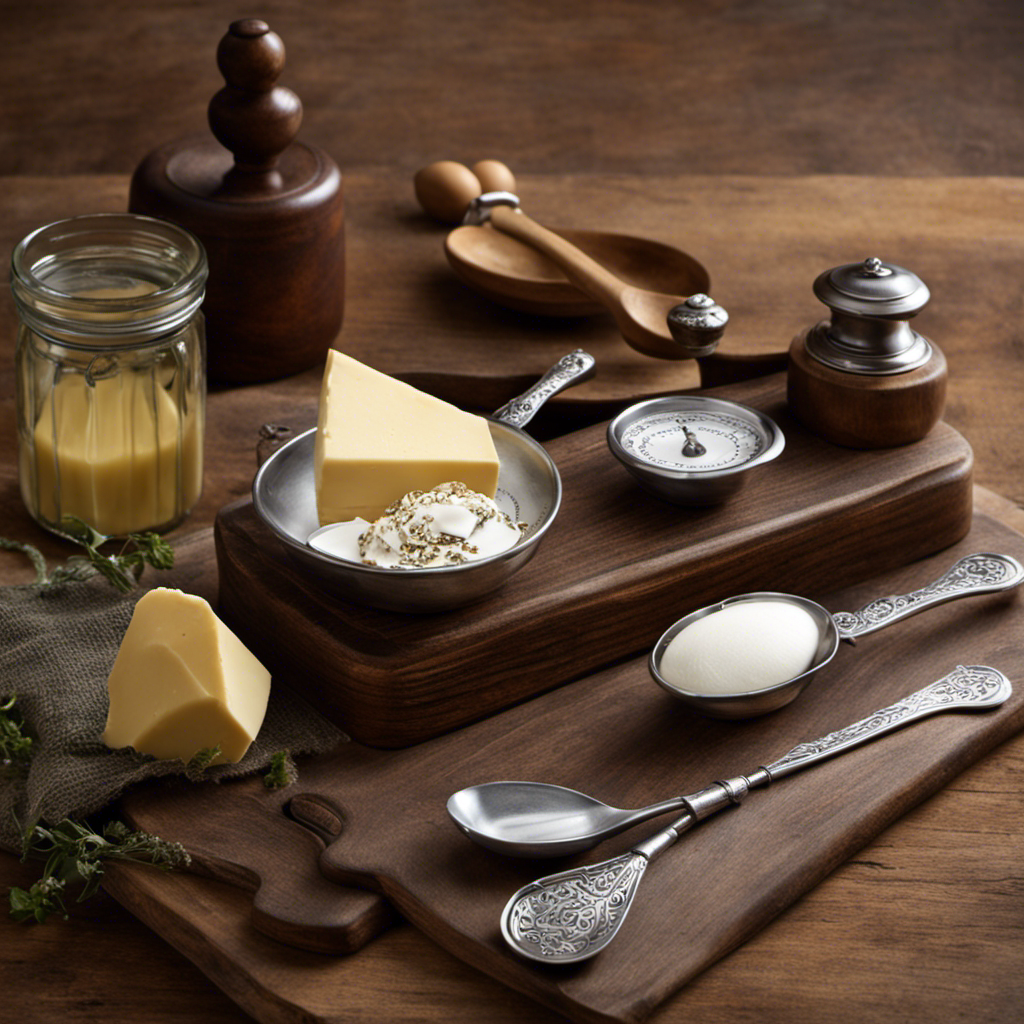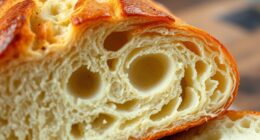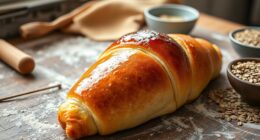As someone who greatly enjoys almonds, I’ve discovered an excellent method to make creamy, homemade almond milk using almond butter! This easy and delicious approach lets you savor the delightful flavor of almonds without the trouble of soaking and grinding them.
In this article, I’ll guide you through each step of the process, from choosing the perfect almond butter to sweetening and storing your homemade almond milk. Get ready to indulge in a velvety beverage that will have your taste buds dancing with delight.
Key Takeaways
- Choose almond butter made only from almonds, without added sugars or oils.
- Soak the almonds overnight before blending them with water and salt to make almond milk.
- Use a 2:1 ratio of water to almond butter for the right consistency.
- Blend the mixture for approximately two minutes for a smooth and creamy almond milk.
Choosing the Right Almond Butter
When choosing the right almond butter, it’s important to look for options that are made with just almonds and don’t contain any added sugars or oils. This ensures that you are getting a pure and natural product without any unnecessary additives.
Many almond butters on the market today contain added sugars and oils to enhance flavor and texture, but these can be detrimental to your health. Added sugars can contribute to weight gain and increase the risk of developing chronic diseases like diabetes. Additionally, added oils can increase the calorie content of the almond butter.
It’s also worth considering alternative nut butters such as cashew or peanut butter, which offer different flavors and nutritional profiles.
Ultimately, choosing almond butter that is made solely from almonds is the best option for a healthy and nutritious choice.
Soaking and Preparing the Almonds
After soaking the almonds overnight, you’ll want to blend them with water and a pinch of salt. This is the first step in making your own almond milk, a popular dairy-free alternative. Almond milk is not only delicious but also provides numerous health benefits.
Here are some reasons why you should consider incorporating almond milk into your diet:
-
Rich in nutrients: Almond milk is a good source of vitamin E, calcium, and healthy fats, which are essential for maintaining overall health.
-
Low in calories: Compared to cow’s milk, almond milk is lower in calories, making it a great option for those looking to manage their weight.
-
Lactose-free: If you’re lactose intolerant or have a dairy allergy, almond milk provides a suitable alternative that won’t cause digestive discomfort.
-
Heart-healthy: Almond milk is cholesterol-free and contains unsaturated fats, which promote heart health and reduce the risk of cardiovascular diseases.
-
Vegan-friendly: Almond milk is plant-based and suitable for those following a vegan or vegetarian lifestyle.
Blending the Almonds With Water
When it comes to blending the almonds with water to make almond milk, two key factors to consider are the water to almond ratio and the blending time required.
The water to almond ratio determines the consistency and creaminess of the final product, so finding the right balance is crucial.
Additionally, the blending time plays a role in achieving a smooth and well-incorporated mixture.
Water to Almond Ratio
To get the right consistency, you’ll want to use a 2:1 ratio of water to almond butter for your homemade almond milk. This ratio ensures that the almond milk is not too watery or too thick.
Here are some reasons why this ratio works best:
-
Creaminess: The higher ratio of water to almond butter creates a creamy texture that is similar to store-bought almond milk.
-
Flavor: The 2:1 ratio allows the natural nutty flavor of the almond butter to shine through without overpowering the taste.
-
Nutritional benefits: Almond milk alternatives are a great option for those who are lactose intolerant or follow a plant-based diet. Almond butter is packed with protein, healthy fats, and essential vitamins and minerals.
-
Smoothness: Blending the almonds with the right amount of water ensures a smooth and velvety consistency.
-
Cost-effective: Making almond milk at home using almond butter is more affordable than buying it from the store.
Blending Time Required?
Blend the mixture for approximately two minutes until it reaches a smooth and creamy consistency. Blending almond milk is a crucial step in achieving the desired texture and flavor.
When it comes to blending techniques, it’s important to have a high-speed blender to ensure a thorough mix. The powerful blades will break down the almond butter and incorporate it evenly with the water.
Two minutes may seem like a short amount of time, but it is enough to create a smooth and creamy almond milk. Blending for longer may result in a thicker consistency, which may not be ideal for drinking or using in recipes. So, stick to the recommended time for the perfect almond milk.
Straining and Filtering the Almond Milk
When it comes to straining and filtering almond milk, there are a few key points to consider.
Firstly, the best straining method is using a nut milk bag or a fine mesh strainer to remove any remaining solids and achieve a smoother texture.
Secondly, there are various filtering options available, such as using cheesecloth or a coffee filter, depending on the level of fineness desired.
Lastly, some tips to ensure successful straining and filtering include squeezing the nut milk bag gently to extract all the liquid and rinsing the bag or strainer immediately after use to prevent any residue from hardening.
Best Straining Methods
Using a fine mesh sieve or cheesecloth is an essential step in making almond milk. It helps remove any remaining almond pulp or grit, resulting in a smoother consistency. Here are some effective straining techniques to consider:
-
Use a fine mesh sieve: This method allows the liquid to pass through while capturing larger particles.
-
Try a nut milk bag: Nut milk bags are designed for straining alternative milk options like almond milk. They effectively separate the pulp from the liquid.
-
Consider using a cheesecloth: Cheesecloth is a versatile fabric that can be folded and layered to achieve a finer strain.
-
Use a coffee filter: If you don’t have a nut milk bag or cheesecloth, a coffee filter can be a suitable alternative. It may take longer to strain, but it can still effectively remove pulp and produce a smoother consistency.
-
Experiment with a fine strainer and spoon: If you don’t have any of the above options, a fine strainer and a spoon can still help remove larger particles.
These straining techniques ensure that your almond milk is silky and free of any unwanted texture. However, straining is just the first step in the filtering process. Now let’s explore some additional filtering options and tips to further refine your almond milk.
Filtering Options and Tips
Now that we’ve discussed the best straining methods for making almond milk with almond butter, let’s move on to filtering options and tips.
When it comes to filtering homemade almond milk, there are a few methods you can use. One popular option is using a nut milk bag, which is a fine mesh bag specifically designed for straining milk from nuts. Another option is using a cheesecloth or a fine-mesh sieve.
Filtering your homemade almond milk is important because it helps remove any remaining almond pulp or solids, resulting in a smooth and creamy texture. Additionally, filtering can help remove any impurities or debris that may have been present in the almonds or water used during the blending process.
Once you’ve filtered your almond milk, you can enjoy the numerous benefits of homemade almond milk. It is a great source of vitamin E, calcium, and healthy fats. It is also free from additives and preservatives that are commonly found in store-bought almond milk.
Now that we’ve filtered our almond milk, let’s explore some sweetening and flavoring options to enhance its taste and customize it to our liking.
Sweetening and Flavoring Options
You can add honey or maple syrup as sweetening options for your almond milk. These natural sweeteners not only enhance the flavor of the milk but also provide added health benefits.
Here are some other ways to add different flavors and natural sweeteners to your homemade almond milk:
-
Vanilla extract: Add a few drops of pure vanilla extract to give your almond milk a subtle and aromatic flavor.
-
Cinnamon: Sprinkle some ground cinnamon into your almond milk for a warm and comforting taste.
-
Cocoa powder: Mix in some unsweetened cocoa powder for a rich and chocolatey flavor.
-
Almond extract: For an intense almond flavor, add a small amount of almond extract to your almond milk.
-
Dates: Blend in a couple of pitted dates to naturally sweeten your almond milk and add a hint of caramel-like taste.
Experiment with these flavors and sweeteners to create your own delicious and personalized almond milk.
Storing and Using Almond Milk
When storing almond milk, it’s important to keep it refrigerated to maintain its freshness and extend its shelf life. Almond milk is a popular dairy-free alternative that offers numerous benefits. It is low in calories, contains no cholesterol, and is rich in vitamins and minerals. Storing almond milk properly is crucial to preserve its nutritional value and taste.
Here are some tips for storing almond milk:
-
Refrigerate: Always keep almond milk in the refrigerator, even before opening. Cold temperatures slow down the growth of bacteria and help maintain its freshness.
-
Use airtight containers: Transfer almond milk into airtight containers to prevent exposure to air and odors that can affect its flavor and quality.
-
Check the expiration date: Pay attention to the expiration date on the packaging and consume almond milk before it expires for the best taste and quality.
Frequently Asked Questions
Can I Use Any Type of Almond Butter to Make Almond Milk?
Yes, you can use any type of almond butter to make almond milk. Different types of almond butter can add different flavors and textures to the milk. Using almond butter in almond milk provides extra creaminess and a boost of nutrients.
How Long Should I Soak the Almonds Before Making Almond Milk?
I usually soak almonds for about 8 hours before making almond milk. It helps soften them and makes blending easier. Using a high-powered blender, like a Vitamix, will give you the best results.
Can I Use a Regular Blender Instead of a High-Speed Blender to Blend the Almonds With Water?
Yes, a regular blender can be used to blend almonds with water to make almond milk. Although high-speed blenders may yield smoother results, a regular blender can still achieve a creamy texture. The blending techniques and nutritional benefits remain the same.
What Can I Do With the Almond Pulp Leftover After Straining the Almond Milk?
After straining the almond milk, the leftover almond pulp can be used in various ways. It can be dried and ground into flour, added to smoothies for added fiber, or used in baking recipes for a nutty flavor. There are endless alternative uses for almond pulp!
Can I Use Almond Milk in Recipes That Call for Regular Milk?
Yes, almond milk can be used as a substitute for regular milk in recipes. It has the benefit of being dairy-free, lower in calories, and can add a subtle nutty flavor to dishes.
Conclusion
In conclusion, making almond milk with almond butter is a simple and nutritious alternative to store-bought options. By choosing the right almond butter and properly soaking and preparing the almonds, you can create a creamy and delicious milk.
Blending the almonds with water and straining it ensures a smooth texture. Sweetening and flavoring options like vanilla extract or dates add a delightful touch.
Store the almond milk in a sealed container and enjoy it in various recipes. With this allusion to the ancient Silk Road, you can embark on a culinary journey and discover the wonders of homemade almond milk.

